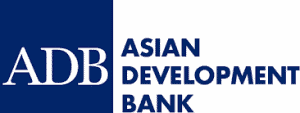COVID-19 positive patients are monitored even after they recover and are released from de-isolation. They are monitored up to a week from release.
The COVID19 strategy update from World Health Organization (WHO) states that countries must do everything they can to stop cases from becoming clusters and clusters from becoming explosive outbreaks. “They must put in place the capacities for testing and diagnosis, isolation, contact tracing, and quarantine; they must engage everyone in the response.”
An official from the Ministry of Health (MoH) said isolation is done in a health facility where the positive patients are kept and treated until they test negative twice within 24 hours in the polymerise chain reaction (PCR) test. “It is manned by the health workers.” The monitoring of COVID-19 patients in the de-isolation facility is like a quarantine facility in an identified tourist grade hotel which is manned mostly by the Desuups of the country.
When COVID-19 patients test negative then the person who tested negative is sent home where the monitoring continues but this time it is mostly done through a telephonic interview where the health official asks about the symptoms spaced in 3 to 4 days.
An official from MoH talked about the number of persons who monitors the COVID-19 patients said, “There is no fixed health worker to patient ratio because of the increasing number of COVID-19 positive patients.”
The official from MoH also talked about the safety measures that the monitoring team uses, Personal Protective Equipment (PPE) is the most important tool towards the safety of the health workers and besides the health workers are under restricted positioning.
Moreover, the health workers get to move only between work to a hotel with arranged transportation. One team of health workers comprises 10 who works in a shift of 3 to 4 persons and this is done to minimize the number of health workers attending to the positive patients. “It also minimizes the exposure towards the positive patients,” the official from MoH said.
“The team of 10 health official changes every 14 days,” the official said adding, the team when they complete the isolation duty they are kept in quarantine for 14 days.
Dr Gosar Pemba from Medical Superintendent of Jigme Dorji Wangchuck National Referral Hospital (JDWNRH) talking to Business Bhutan on the challenges faced during the monitoring in the isolation room said the problem is wearing of Personal protective equipment (PPE) by the doctors as due to change in weather the staffs are facing a tough time bearing the heat. “The major challenge is the close contact with the positive patients; a doctor with full PPE has to come in contact with the positive patients.”
He also said that to avoid more time in personal contact with the positive patients, the nurses do all the work at one time just to avoid more contact with the patients in the isolation room. “The checkup is done every six hours.”
Dr Gosar Pemba also talked about the checkup done by the doctors. A doctor in full PPE enters the isolation room for a checkup and does not come out of the room. The doctor after the inspection moves straight to the designated hotel and comes back for evening routine check-up and all discussion with the other staff is done through video conference.
“The video conference is made to avoid contact with a doctor who has made direct contact with the positive patients,” he said.
The official from MoH said the main challenge with recovered patients is compliance. “We have received complaints that they have been found attending gatherings.”
For the persons who have recovered and released home, the Ministry of Health advises everyone to stay at home as much as possible and avoid visiting places where there are gatherings.
Sonam Tashi from Thimphu













